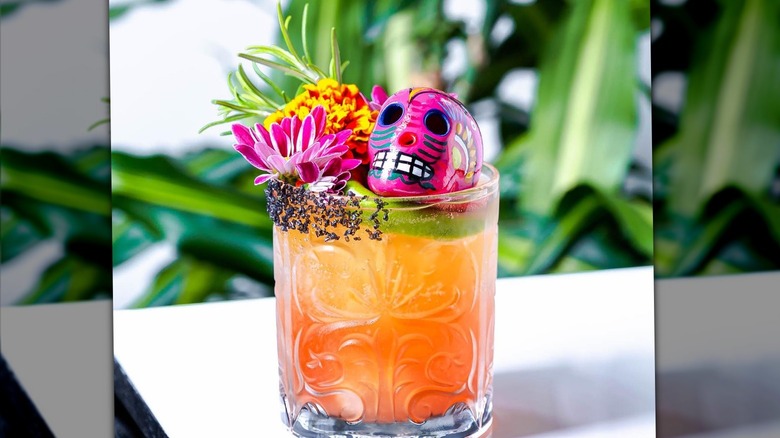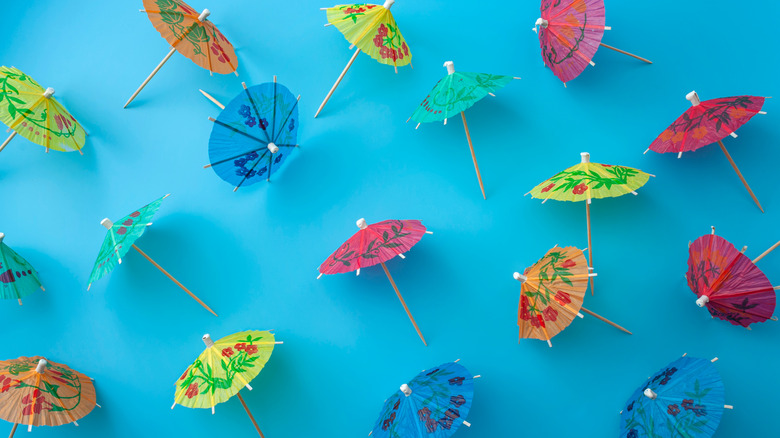Inedible Cocktail Garnishes Need To Be Kicked Off The Menu
Garnishes in cocktails add visual appeal and a touch of flavor. However, while some garnishes serve as edible enhancements, there is a growing trend of using increasingly elaborate inedible cocktail garnishes, which fly in the face of the cocktail garnish's intended purpose, promote waste, and could even pose risks to your health.
The primary purpose of a garnish in a cocktail is to complement and enhance the flavors of the drink, to provide an additional layer of taste and aroma, creating a harmonious balance with the cocktail's ingredients or a pleasantly contrasting flavor. Fresh fruits, herbs like mint, basil, or rosemary, and edible flowers, such as pansies or violets, can add flavor and a visually appealing accent. Inedible cocktail garnishes, however, offer no value in terms of taste or aroma. While they may look appealing, they don't contribute anything to the enjoyment of the drink and can sometimes detract from the overall experience.
People have been garnishing cocktails since the 19th century, though at that time even the more unusual garnishes (flaming orange peel, anyone?) were always edible. After Prohibition non-edible garnishes started setting different drinks apart, though for most of the century, the range of decorations was confined to paper umbrellas and tiki-related flourishes. In the past decade or so, the cocktail renaissance, in conjunction with the rise of Instagram and other social media, has pushed the garnish train right off the tracks. People are adding toys, plastic dinosaurs, and even, in one case, a hotel room key, hoping the stranger the garnish, the more shares the photos will get, and the more people will remember their drink.
What's so bad about inedible cocktail garnishes?
One consideration when using inedible garnishes is the issue of sustainability and environmental impact. Inedible garnishes, particularly those made of plastic or other non-biodegradable materials become waste, contributing to pollution and harming the environment. In most cases, these trinkets are in your drink for a second, and then they're in the garbage.
Furthermore, according to a Clemson University study, there are potential health concerns associated with garnishes. Plastic baubles, for instance, may not have been stored or handled sanitarily and this is a concern when even a slice of lemon can introduce germs to your drink. Additionally, non-edible flowers or other decorative elements may be poisonous or may have been treated with chemicals or pesticides that are unsafe for consumption, per CocktailSafe. By opting for edible garnishes, we ensure that all parts of the drink are safe to consume, maintaining the integrity of the cocktail and the consumer's well-being.
Inedible cocktail garnishes should be left off the menu due to their lack of functionality, environmental impact, and potential health concerns. Opting for edible garnishes that enhance the drink's flavor, aroma, and visual appeal is a more sustainable and delicious approach. Cocktail enthusiasts can create delightful and memorable drinks, from new creations to classic cocktails, while minimizing waste and prioritizing consumer safety, by selecting fresh fruits, herbs, and edible flowers. Let's raise our glasses to cocktails that look good and taste even better!

